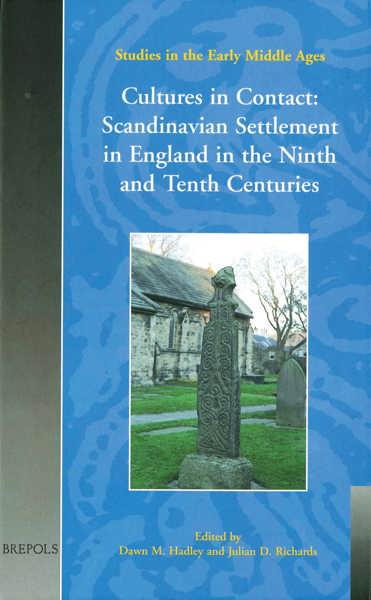
People and Space in the Middle Ages, 300-1300
Wendy Davies, Guy Halsall, Andrew Reynolds (eds)
- Pages: 368 p.
- Size:160 x 240 mm
- Illustrations:51 b/w, 1 col.
- Language(s):English
- Publication Year:2007
- € 80,00 EXCL. VAT RETAIL PRICE
- ISBN: 978-2-503-51526-7
- Hardback
- Available
- € 80,00 EXCL. VAT RETAIL PRICE
- ISBN: 978-2-503-53864-8
- E-book
- Available
The contributors to this book address what determined the size and shape of communities in Britain, France, Spain and Iceland in the early historic past, and the ways that these communities delineated themselves in physical terms.
"People and Space in the Middle Ages, 300-1300 is another excellent volume in Brepols' 'Studies in the Early Middle Ages' series, combining leading scholarship with handsome production values." (S. McLeod in Parergon 25.1 (2008), p. 204-205)
"I enthousiastically recommend this book to anyone interested in how medieval communities defined themselves or were defined by others." (M.A. Hall in: Medieval Archaeology, Vol. 52, November 2008, p.458-460)
The contributors to this book address what determined the size and shape of communities in the early historic past and the ways that communities delineated themselves in physical terms. The roles of the environment, labour patterns, the church and the physical proximity of residences in determining community identity are also examined. Additional themes include social exclusion, the community as an elite body, and the various stimuli for change in community structure. Major issues surrounding relationships between the local and the governmental are investigated: did larger polities exploit pre-existing communities, or did developments in governance call local communities into being?
Introduction: Community Definition and Community Formation in the Early Middle Ages — Some Questions - Wendy Davies
Social Identities on the Macro Scale: A Maximum View of Wansdyke - Andrew Reynolds and Alex Langlands
Settlement Organization and Farm Abandonment: The Curious Landscape of Reykjahverfi, North-East Iceland - Birna Lárusdóttir
Geography, Communities and Socio-Political Organization in Medieval Northern Iceland - Chris Callow
Communities of Dispersed Settlements: Social Organization at the Ground Level in Tenth- to Thirteenth-Century Iceland - Orri Vésteinsson
Boundaries of Knowledge: Mapping the Land Units of Late Anglo-Saxon and Norman England - Steven Bassett
Mapping Scale Change: Hierarchization and Fission in Castilian Rural Communities during the Tenth and Eleventh Centuries - Julio Escalona
Central Places and the Territorial Organization of Communities: The Occupation of Hilltop Sites in Early Medieval Northern Castile - Ińaki Martín Viso
The Ending of the Roman City: The Case of Clunia in the Northern Plateau of Spain - Adela Cepas
Villas, Territories and Communities in Merovingian Northern Gaul - Guy Halsall
Community, Identity and the Later Anglo-Saxon Town: The Case of Southern England - Grenville Astill
Marmoutier: Familia versus Family. The Relations between Monastery and Serfs in Eleventh-Century North-West France - Paul Fouracre
Narrating Places: Memory and Space in Medieval Monasteries - Antonio Sennis
Populations, Territory and Community Membership: Contrasts and Conclusions - Wendy Davies
Glossary




